
Table of Contents
In the dynamic landscape of 2024, where digital transformation and customer experience have taken center stage, measuring the return on investment (ROI) of brand strategy has evolved into a complex yet critical endeavor for Chief Marketing Officers (CMOs). The question that keeps marketing leaders up at night is no longer ‘Are we measuring ROI?’ but rather ‘Are we measuring it right?’ This article, ‘Measuring Brand Strategy ROI: Key Metrics Every CMO Should Track in 2024’, aims to demystify this conundrum and provide a comprehensive guide on navigating the intricate world of brand strategy metrics.
Let’s agree that in today’s data-driven era, tracking the right metrics is not just a good practice, but a necessity. It’s the difference between steering your brand strategy with a GPS or a compass. The promise of this article is to equip you with the insights and tools to make data-informed decisions, turning your brand strategy into a revenue-generating powerhouse. By the end of this read, you’ll have a clear understanding of the key metrics to track, how to track them, and most importantly, how to interpret them to drive your brand’s success.
But first, let’s address the elephant in the room. According to a 2023 study by the Fournaise Marketing Group, 80% of CMOs cannot prove the impact of their marketing efforts on business results. This is a staggering figure, given the billions of dollars poured into marketing each year. So, the question remains: Are you among the 20% who can, or are you ready to join their ranks? Let’s dive in and find out.
Quantifying Success: A CMO’s Guide to Measuring Brand Strategy ROI in 2024
In the dynamic landscape of 2024, measuring the return on investment (ROI) of brand strategy has evolved into a complex yet critical endeavor for Chief Marketing Officers (CMOs). Gone are the days when success was merely quantified by sales figures or market share. Today’s consumers, empowered by digital connectivity and a plethora of choices, demand authenticity, engagement, and relevance. Thus, CMOs must adopt a holistic approach to quantifying success, one that transcends traditional metrics and embraces the nuanced, multifaceted nature of brand strategy in the 21st century. This involves tracking brand awareness and sentiment across various digital platforms, assessing customer loyalty and advocacy, and even measuring the impact of brand initiatives on employee engagement and company culture. Moreover, with the rise of artificial intelligence and machine learning, CMOs can now leverage predictive analytics to forecast the potential ROI of future brand strategies, enabling data-driven decision making that was once unimaginable. In essence, quantifying success in 2024 is not just about counting beans, but about understanding, engaging, and ultimately, inspiring the hearts and minds of consumers.
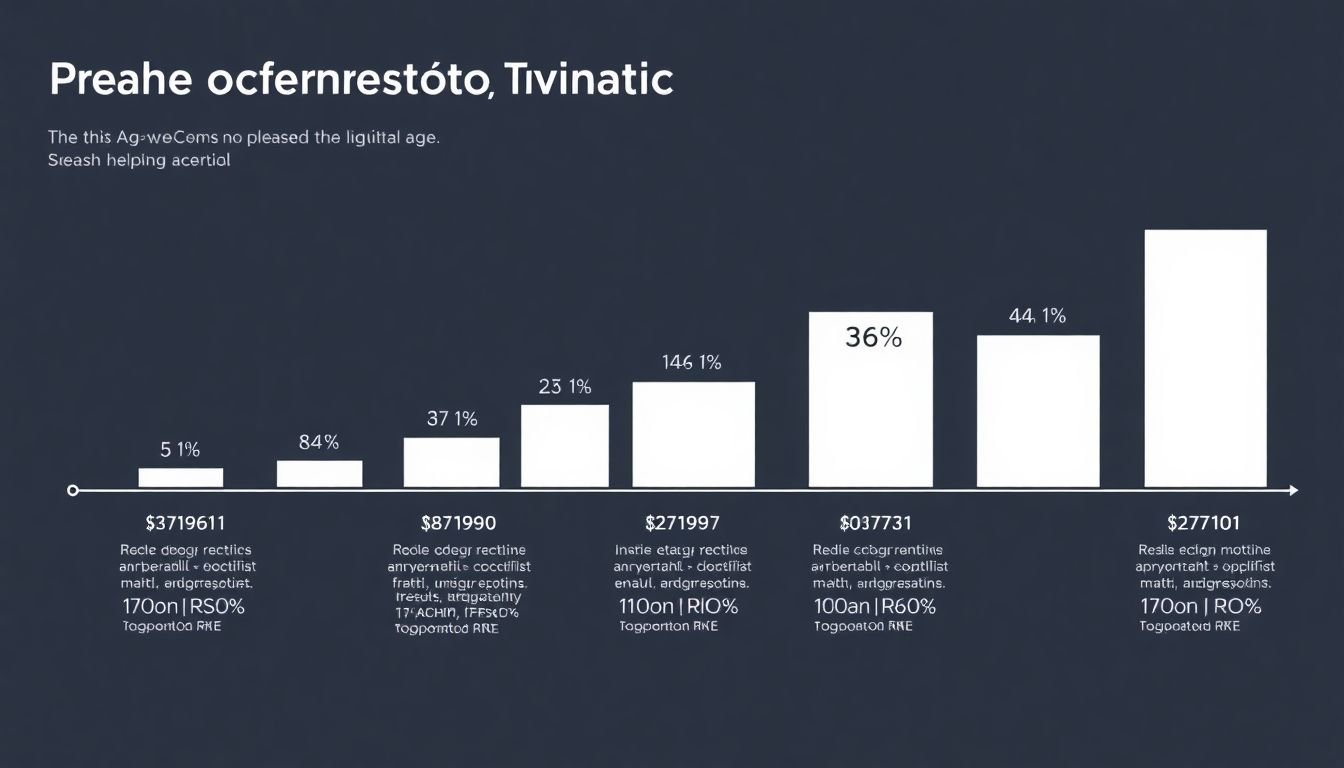
The Evolution of ROI in the Digital Age
In the pre-digital age, Return on Investment (ROI) was a straightforward concept, primarily focused on tangible, financial metrics. Traditional ROI calculations centered around the bottom line, with a clear emphasis on revenue growth and cost reduction. However, the advent of the digital era has brought about a significant shift in this perspective, particularly in the realm of brand strategy.
The digital revolution has introduced a plethora of intangible yet invaluable indicators that have enriched our understanding of ROI. These indicators, while not directly translatable into monetary terms, hold immense strategic value. They range from brand awareness and customer engagement to data-driven insights and customer lifetime value.
For instance, social media metrics have become integral to modern ROI calculations. Likes, shares, and followers, once dismissed as vanity metrics, are now recognized as powerful indicators of brand reach and influence. Similarly, website traffic, click-through rates, and conversion rates provide insights into customer behavior and the effectiveness of digital marketing strategies.
Moreover, the digital age has facilitated the collection and analysis of vast amounts of data, enabling brands to gain deeper insights into their customers and markets. This data-driven approach allows for more accurate predictions of future trends and behaviors, enhancing the precision of ROI projections.
However, this evolution also presents challenges. The intangible nature of many digital indicators can make them difficult to quantify and compare. Furthermore, the constant evolution of digital platforms and consumer behaviors requires brands to continually adapt their ROI strategies.
In conclusion, the digital age has transformed the concept of ROI, expanding it to encompass a broader range of metrics and intangible values. While this evolution presents challenges, it also offers brands unprecedented opportunities to understand and engage with their customers, ultimately driving sustainable growth and success.

The CMO’s New Toolkit: Essential Marketing Metrics
In the dynamic marketing landscape of 2024, Chief Marketing Officers (CMOs) are armed with an array of tools to measure and optimize their brand strategies. Gone are the days when marketing was a guessing game; today, it’s a data-driven science. Let’s delve into the essential marketing metrics that CMOs should be tracking to ensure their strategies are not only innovative but also delivering a robust return on investment (ROI).
The first metric in our CMO’s toolkit is Customer Lifetime Value (CLV). CLV is the total revenue a business can reasonably expect from a single customer account throughout the business relationship. By understanding CLV, CMOs can make informed decisions about customer acquisition costs and invest wisely in channels that drive high-value customers.
Next, we have Marketing Qualified Leads (MQLs) and Sales Qualified Leads (SQLs). MQLs represent the number of leads that marketing has deemed more likely to become customers, while SQLs are those that the sales team has accepted as sales opportunities. Tracking these metrics helps CMOs align marketing and sales efforts, ensuring that marketing is generating leads that sales can convert.
Customer Acquisition Cost (CAC) is another crucial metric. It measures the cost of acquiring a new customer, including marketing and sales expenses. By tracking CAC, CMOs can optimize their marketing spend, improve ROI, and ensure that their acquisition strategies are cost-effective.
Brand Awareness metrics, such as reach, impressions, and unaided brand recall, are also vital. They help CMOs understand their brand’s visibility and resonance in the market. In 2024, with the rise of digital platforms, these metrics can be tracked in real-time, allowing for swift adjustments to brand strategy.
Lastly, CMOs should keep a close eye on Customer Satisfaction (CSAT) and Net Promoter Score (NPS). These metrics provide insights into customer happiness and loyalty. By tracking CSAT and NPS, CMOs can identify areas for improvement, enhance customer experiences, and drive brand advocacy.
In conclusion, the CMO’s toolkit in 2024 is packed with powerful metrics that, when tracked and analyzed effectively, can transform marketing strategies into ROI powerhouses. By understanding and optimizing these metrics, CMOs can navigate the complex marketing landscape with confidence and precision.

Brand Awareness: The Cornerstone of ROI
Brand awareness, the cornerstone of any business’s success, plays an indispensable role in driving Return on Investment (ROI). It’s the silent salesman that works tirelessly, even when you’re not actively marketing your product or service. But how does one quantify this intangible asset? Let’s delve into the metrics that help us understand and track brand awareness.Firstly, let’s consider ‘reach’. This metric quantifies the number of unique individuals who have seen your brand’s message. It could be through an ad, a social media post, or even a word-of-mouth referral. Reach is typically tracked using impressions, which is the total number of times your content is displayed. For instance, if your ad is shown to 100 unique individuals, your reach is 100, and your impressions are 100. If the same ad is shown to those 100 individuals again, your reach remains 100, but your impressions increase to 200.Next, we have ‘sentiment’. This metric gauges the public’s perception of your brand. It’s the ‘word on the street’, so to speak. Sentiment can be quantified through social media listening tools, customer surveys, and reviews. Positive sentiment indicates that your brand is viewed favorably, while negative sentiment signals areas for improvement. Neutral sentiment suggests that your brand is neither loved nor loathed, presenting an opportunity to make a lasting impression.Tracking these metrics allows you to understand your brand’s impact and make data-driven decisions. For example, if your reach is high but your sentiment is negative, you might need to reassess your marketing strategy. Conversely, if your sentiment is positive but your reach is low, you might need to increase your marketing efforts.In essence, brand awareness is not just a feel-good metric. It’s a tangible asset that can be quantified, tracked, and optimized to drive ROI. It’s the foundation upon which customer loyalty, sales, and ultimately, profit, are built. So, the next time you’re wondering if that marketing campaign is worth the investment, remember that you’re not just increasing reach or changing sentiment
- you’re building your brand, and that’s priceless.
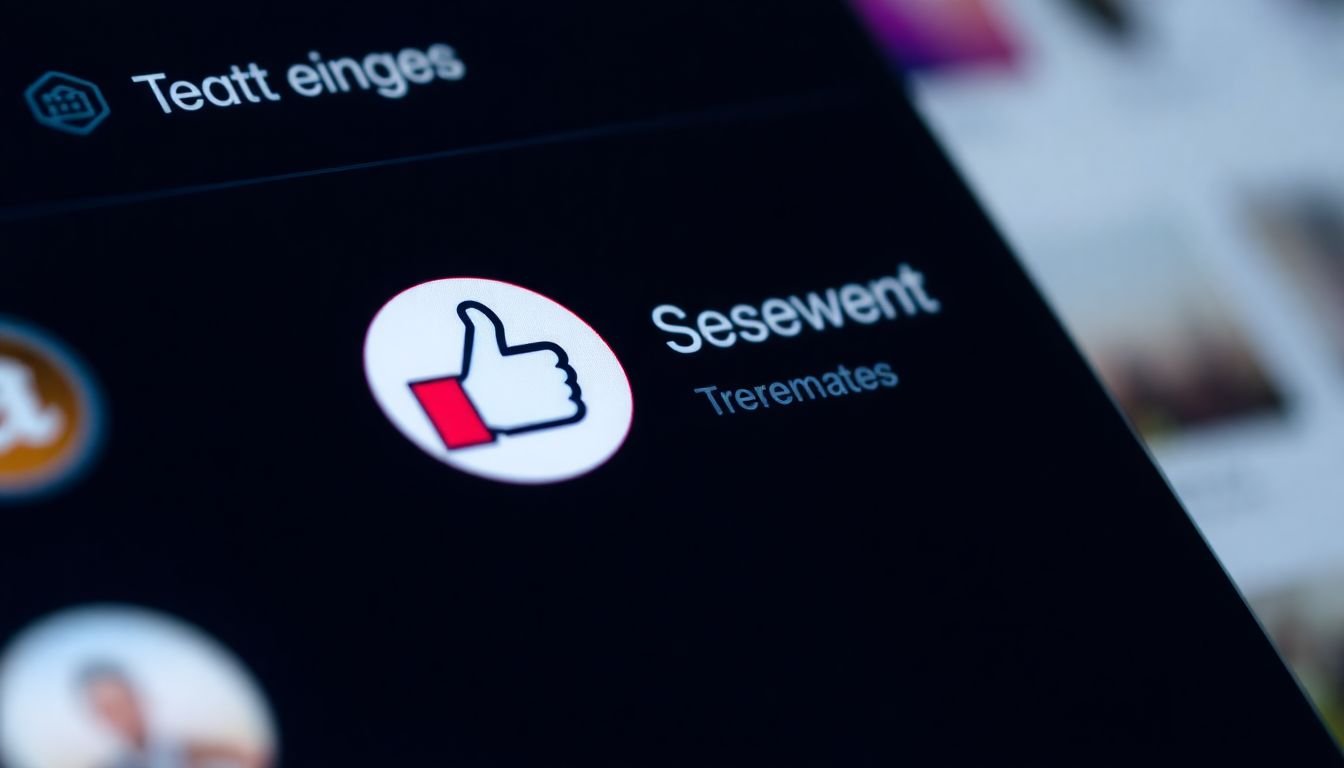
Engagement: The New Currency of Brand Strategy
In the dynamic landscape of today’s business world, the traditional metrics of success are evolving. Gone are the days when sales figures and market share were the sole determinants of a brand’s vitality. Today, a new currency has emerged, one that is reshaping brand strategy and providing a more holistic view of a company’s health and impact: engagement.
Engagement, in the digital age, is the lifeblood of brands. It’s the likes, shares, comments, and clicks that breathe life into a brand’s online presence, turning passive observers into active participants. These metrics, once dismissed as mere vanity metrics, are now recognized as powerful tools for measuring the return on investment (ROI) of brand strategy.
Likes, for instance, serve as a simple yet effective gauge of a brand’s popularity and appeal. They indicate that a brand’s message has resonated with an audience, encouraging them to publicly align themselves with the brand. Shares, on the other hand, are a testament to a brand’s ability to inspire action. They demonstrate that a brand’s message is not only liked but also deemed worthy of being passed on to others.
Comments, too, offer valuable insights. They provide a window into the audience’s thoughts and feelings, allowing brands to understand their perception and gather feedback. Clicks, meanwhile, are a clear indicator of interest. They show that a brand’s message has piqued the audience’s curiosity, driving them to seek out more information.
In essence, engagement metrics are the canaries in the coal mine of brand strategy. They provide early warnings of shifts in audience sentiment, alerting brands to potential issues and opportunities. By tracking these metrics, brands can make data-driven decisions, refining their strategies to better connect with their audience and drive meaningful results. In the grand scheme of brand strategy, engagement may be a new currency, but it’s one that’s quickly becoming indispensable.
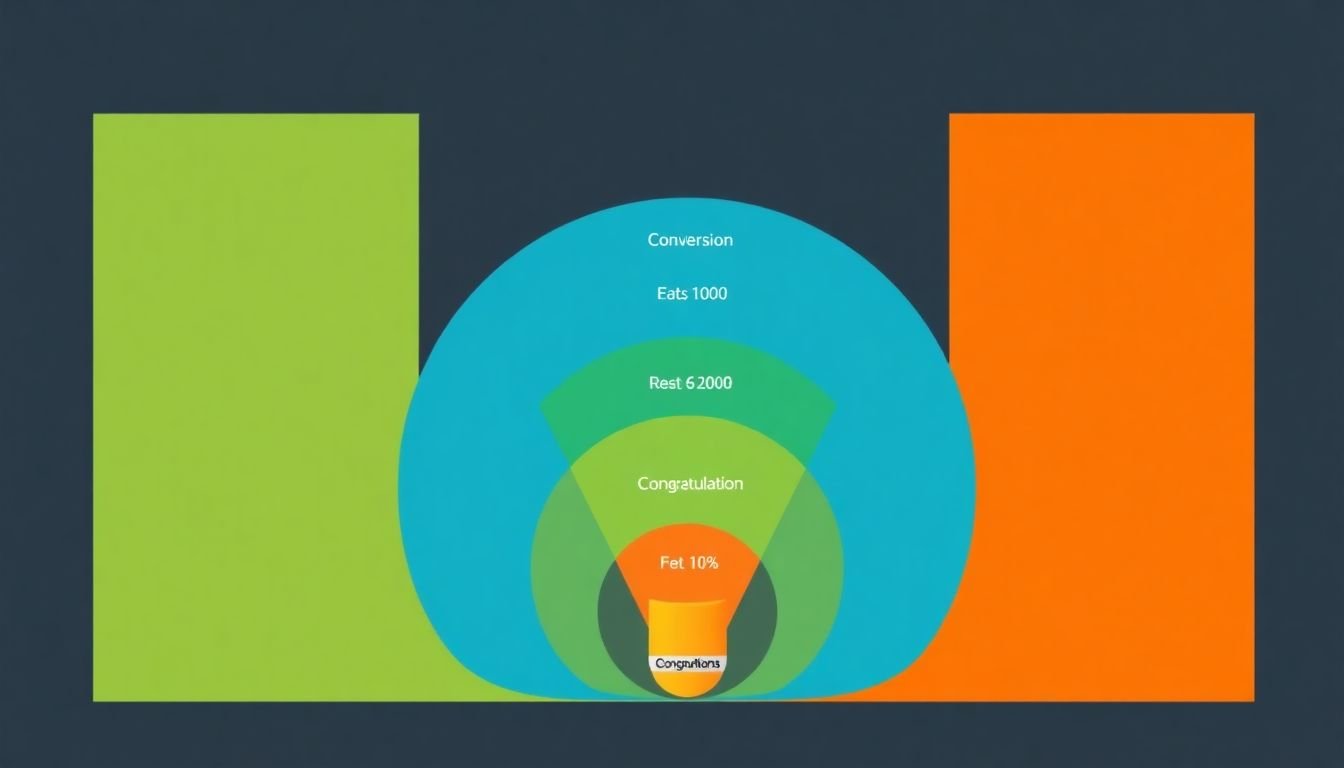
Conversion Rates: The Holy Grail of ROI
Conversion rates, the holy grail of Return on Investment (ROI), are the silent champions of brand strategy. They whisper the tale of your marketing efforts’ success, transforming mere website visitors into engaged customers. In the grand chessboard of digital marketing, conversion rates are the pawns that can swiftly become queens, shifting the game in your favor.
Imagine a bustling marketplace, where each stall is a touchpoint
- a website, an email, a social media post. Each touchpoint has a unique conversion rate, a silent salesperson, tirelessly persuading passersby to step inside. Tracking these rates is akin to counting the customers entering each stall. It’s not just about the total footfall, but the percentage that becomes paying customers.
To track conversion rates, you’ll need to set clear goals. Are you aiming for sales, sign-ups, or downloads? Once defined, use tools like Google Analytics to monitor these rates across various touchpoints. It’s like having a secret shopper in each stall, reporting back on the effectiveness of your sales pitch.
Optimizing conversion rates is an art, a dance with data and design. Here are some steps to help you:
- Understand your audience. Who are they? What do they want? Tailor your message to resonate with them.
- Simplify your call-to-action. Make it clear, visible, and compelling. Think of it as the shopkeeper’s friendly ‘Welcome, come on in!’
- Test, test, test. A/B testing can help you fine-tune your approach. It’s like trying out different sales pitches to see which one works best.
- Monitor and adjust. Conversion rates are not static. They change with trends, seasons, and customer behavior. Keep a watchful eye and be ready to adapt.
In the end, conversion rates are not just numbers on a screen. They are the lifeblood of your brand strategy, the silent salespeople working tirelessly to turn visitors into customers. Track them, optimize them, and watch your ROI soar.
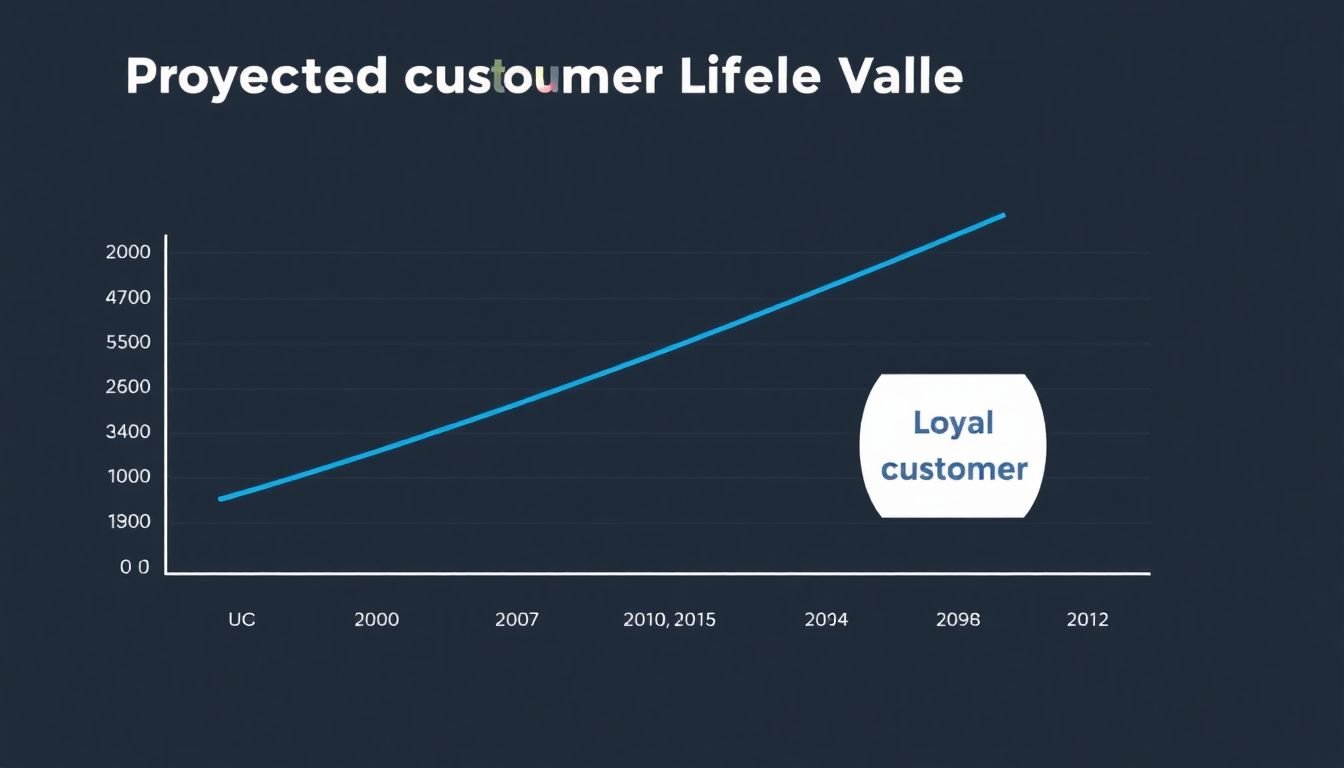
Customer Lifetime Value: The Long View of ROI
Customer Lifetime Value (CLV), often overlooked in the short-term hustle of marketing, is a powerful metric that offers a long-view perspective on Return on Investment (ROI). It’s not just about the first sale, but the entire relationship with a customer. CLV represents the total revenue a business can reasonably expect from a single customer account throughout the business relationship. It’s a critical tool for measuring the success of brand strategies, as it helps understand the true value of customer acquisition and retention.
Calculating CLV involves a few steps. First, estimate the average revenue per customer per year. Then, multiply that by the average customer retention time. For instance, if your average customer spends $100 a year and stays with you for 5 years, their CLV is $500. However, this is a simple average and may not account for customer churn or changes in spending over time. A more sophisticated approach might use predictive modeling to estimate CLV based on customer behavior and demographics.
Maximizing CLV is a strategic game. It’s not just about acquiring new customers, but also about retaining and upselling to existing ones. This could involve improving customer experience, offering loyalty programs, or personalizing marketing efforts. It’s about turning customers into advocates who stay with your brand and bring in more business through word-of-mouth. After all, a 5% increase in customer retention can increase a company’s profitability by 75%.
In essence, CLV is not just a number, but a philosophy. It’s about shifting the focus from short-term gains to long-term relationships. It’s about understanding that a customer is worth more than a single transaction. And it’s about using this understanding to guide brand strategies that maximize ROI in the long run.

Attribution Modeling: Unraveling the ROI Mystery
In the vast landscape of digital marketing, understanding the return on investment (ROI) of your brand strategy can often feel like trying to solve a mystery. This is where attribution modeling steps in, acting as your trusty sidekick, armed with a magnifying glass and a keen analytical mind. Attribution modeling is the process of determining how credit for sales or conversions should be assigned to various marketing touchpoints along the customer journey. By unraveling this mystery, you gain a comprehensive understanding of your brand strategy’s ROI, enabling you to make informed decisions and optimize your marketing spend.
Imagine you’re a detective, and each marketing channel
- email, social media, PPC, organic search
- is a suspect. Different attribution models are like different interrogation techniques, each revealing a unique perspective on the customer journey. For instance, the Last Click model gives all the credit to the last touchpoint before a conversion, while the First Click model praises the channel that initially introduced the customer to your brand. However, these models can oversimplify the customer journey, much like a detective focusing solely on the most obvious suspect.
Enter more sophisticated models, such as Linear, Time Decay, and Position-Based. The Linear model distributes credit equally across all touchpoints, acknowledging that each channel plays a role. The Time Decay model gives more credit to touchpoints closer to the conversion, reflecting the idea that recent interactions have a greater impact. The Position-Based model, on the other hand, focuses on the first and last touchpoints, with a little extra credit for touchpoints in the middle, mirroring the customer’s thought process as they move from awareness to decision.
Each model has its pros and cons, much like different interrogation techniques. The key is to choose the model that best aligns with your business goals and customer behavior. By doing so, you’ll gain a clearer picture of your brand strategy’s ROI, allowing you to allocate your marketing budget more effectively and watch your sales soar. After all, every good detective knows that solving the case is all about asking the right questions
- and in marketing, that means using the right attribution model.

The Role of AI and Machine Learning in Measuring ROI
In the dynamic landscape of modern marketing, measuring the Return on Investment (ROI) of brand strategies has evolved into a complex yet critical task. Artificial Intelligence (AI) and Machine Learning (ML) have emerged as powerful allies, transforming the way we quantify and understand the impact of our branding efforts.
AI and ML can enhance ROI measurement in several ways. Firstly, they can analyze vast amounts of data from diverse sources, including social media, customer interactions, and market trends, to provide a holistic view of a brand’s performance. This is achieved through techniques like Natural Language Processing (NLP) for text analysis and predictive modeling for trend forecasting.
Take, for instance, a retail brand using AI to measure the ROI of its influencer marketing campaigns. ML algorithms can analyze the engagement and reach of each influencer’s posts, providing real-time insights into the campaign’s effectiveness. This allows for dynamic adjustments, ensuring that resources are allocated to the most impactful influencers.
Moreover, AI can help identify and quantify the intangible aspects of branding, such as brand sentiment and awareness. Sentiment analysis, for example, can gauge the public’s perception of a brand, providing valuable insights into the effectiveness of branding strategies aimed at improving brand image.
The future potential of AI and ML in measuring ROI is vast. These technologies could soon enable predictive ROI modeling, allowing brands to simulate the potential impact of different strategies before implementation. They could also facilitate the creation of personalized ROI metrics, tailored to individual customer segments or even individual customers.
In conclusion, AI and ML are not just tools for measuring ROI; they are partners that can help brands navigate the intricate world of marketing, providing insights that are both profound and actionable. As these technologies continue to evolve, their role in shaping effective brand strategies will only become more pronounced.
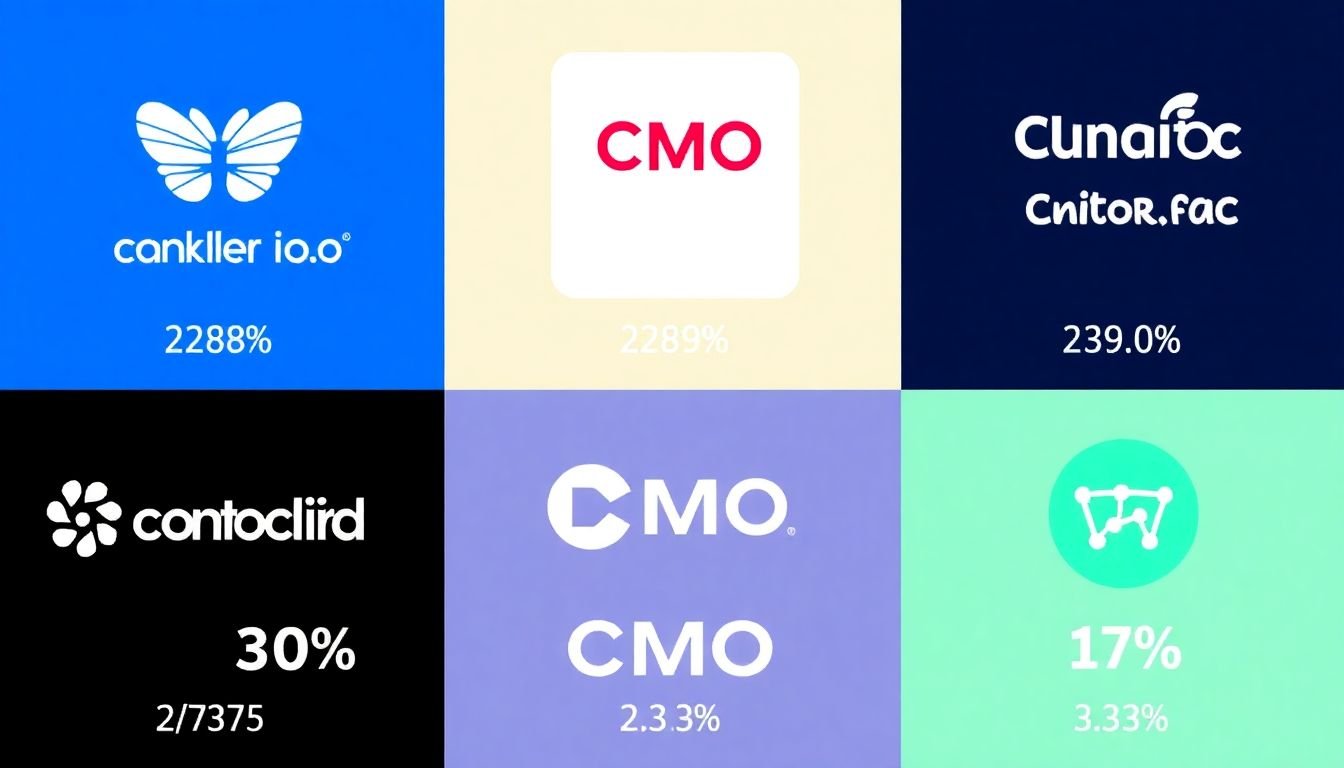
Case Studies: Lessons from CMOs Who Nailed ROI
In the dynamic world of marketing, Chief Marketing Officers (CMOs) are constantly seeking ways to quantify their efforts and maximize return on investment (ROI). Let’s delve into two compelling case studies of CMOs who have masterfully measured and optimized their brand strategy ROI.
Case Study 1: Procter & Gamble’s A.G. Lafley
Under Lafley’s leadership, P&G transformed its approach to marketing by focusing on ‘consumer-centricity’. He implemented a new metric, the ‘Brand Value Creation’ (BVC) score, which measured the impact of marketing activities on brand value. Here’s how he did it:
- Consumer Immersion: Lafley encouraged his team to spend time with consumers to understand their needs and behaviors.
- Simplification: He streamlined P&G’s product portfolio, focusing on core brands and cutting underperforming ones.
- Innovation: Lafley invested in innovative products and marketing campaigns that resonated with consumers.
- BVC Metric: P&G tracked BVC by measuring changes in brand value, market share, and consumer satisfaction.
The result? P&G’s market capitalization more than doubled during Lafley’s tenure, from $230 billion to $500 billion.
Case Study 2: Coca-Cola’s Muhtar Kent
Kent focused on ‘total beverage growth’ strategy, expanding Coca-Cola’s portfolio beyond carbonated drinks. He used a combination of metrics to measure ROI:
- Share of Throat: This metric measured Coca-Cola’s share of the total beverage market, not just carbonated drinks.
- Revenue Growth Management (RGM): Kent tracked the growth of each brand and product category.
- Operational Excellence: He optimized supply chain and distribution to improve efficiency and reduce costs.
Kent’s strategy led to consistent revenue growth. Between 2008 and 2017, Coca-Cola’s revenue grew from $31.9 billion to $35.4 billion, despite declining soda consumption.
Both Lafley and Kent demonstrate that a well-measured, consumer-focused brand strategy can drive significant ROI. By tracking the right metrics and staying agile, CMOs can navigate market changes and deliver sustained growth.

The Future of ROI: Predictions for 2024 and Beyond
As we step into the uncharted territories of 2024 and beyond, the landscape of Return on Investment (ROI) measurement is set to undergo a seismic shift, driven by emerging trends, disruptive technologies, and evolving consumer behaviors. CMOs, the architects of marketing strategies, must stay ahead of the curve to navigate this dynamic terrain. The future of ROI measurement is poised to be more data-driven and real-time than ever before. Artificial Intelligence (AI) and Machine Learning (ML) will play a pivotal role, enabling predictive analytics that can forecast ROI with unprecedented accuracy. These technologies will not only help CMOs make data-driven decisions but also automate and optimize marketing spend in real-time, ensuring that every dollar invested yields maximum returns. Another trend that’s set to reshape ROI measurement is the increasing emphasis on customer experience (CX). In the future, CMOs will not just focus on the traditional metrics like sales and conversions but also on the intangible aspects that create lasting customer relationships. This includes metrics like Net Promoter Score (NPS), Customer Lifetime Value (CLV), and Customer Satisfaction (CSAT). To measure these, CMOs will need to adopt advanced analytics tools and integrate data from various touchpoints along the customer journey. However, this future also presents challenges. The increasing complexity of data sources and the need for real-time analysis will require CMOs to have a robust data infrastructure and a team with advanced analytical skills. Moreover, the ethical use of data will be a critical concern. CMOs must ensure that they are compliant with data protection regulations and respect customer privacy while leveraging data for ROI measurement. In conclusion, the future of ROI measurement is exciting, complex, and full of opportunities. CMOs who embrace these trends, invest in the right technologies, and build a data-savvy team will be well-positioned to navigate this future and drive business growth. The journey to 2024 and beyond promises to be a thrilling ride, and those who stay informed and adaptable will be the ones steering the ship.
FAQ
What is the significance of measuring brand strategy ROI in 2024?
What are the key marketing metrics that CMOs should track to measure brand strategy ROI?
- Brand Awareness (e.g., reach, impressions, unaided brand recall)
- Customer Sentiment (e.g., net promoter score, brand perception surveys)
- Customer Engagement (e.g., click-through rates, time spent on site, social media interactions)
- Conversion Rates (e.g., website conversions, lead generation, sales)
- Customer Lifetime Value (CLV) and Cost per Acquisition (CPA)
- Market Share and Competitor Analysis
- Brand Equity (e.g., brand value, brand strength, brand differentiation)
How can CMOs ensure they’re tracking the right metrics for their brand strategy?
- Align metrics with business objectives and KPIs
- Consider the unique aspects of their brand, industry, and target audience
- Use a mix of leading and lagging indicators to capture both short-term and long-term impact
- Regularly review and adjust metrics based on changes in the market, customer behavior, and business priorities
- Establish a baseline and set targets for each metric to monitor progress and improvement
What role do brand equity metrics play in measuring brand strategy ROI?
How can CMOs attribute marketing efforts to revenue growth when measuring brand strategy ROI?
What are some common pitfalls to avoid when measuring brand strategy ROI?
- Focusing solely on short-term metrics at the expense of long-term brand building
- Using vanity metrics that don’t translate to business outcomes
- Ignoring the impact of external factors on brand performance
- Not considering the full customer journey and touchpoints
- Failing to integrate data from various sources and silos
- Not regularly reviewing and updating metrics to adapt to changing market conditions
How can CMOs communicate the value of their brand strategy to stakeholders?
- Translate complex data and metrics into clear, concise, and compelling stories
- Highlight both quantitative (e.g., revenue growth, market share) and qualitative (e.g., customer sentiment, brand perception) results
- Use visualizations, such as charts, graphs, and dashboards, to illustrate trends and progress
- Connect brand strategy ROI to broader business objectives and KPIs
- Regularly update stakeholders on performance, challenges, and opportunities
- Celebrate successes and learn from setbacks to build credibility and support
What emerging technologies can help CMOs better measure brand strategy ROI in 2024?
- Artificial Intelligence (AI) and Machine Learning (ML) for predictive analytics and customer segmentation
- Natural Language Processing (NLP) for sentiment analysis and brand perception insights
- Advanced data visualization tools for better data storytelling and communication
- Cross-device and cross-channel tracking for a holistic view of the customer journey
- Blockchain for secure and transparent data sharing and collaboration
- Augmented Reality (AR) and Virtual Reality (VR) for immersive brand experiences and engagement measurement